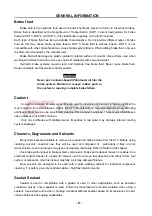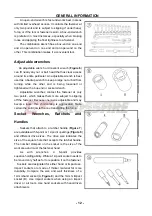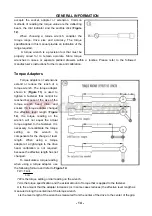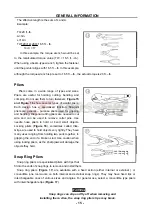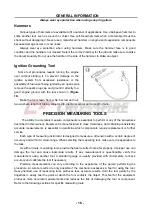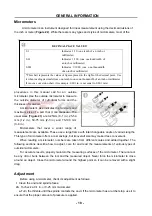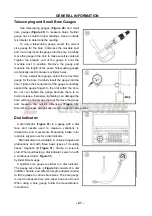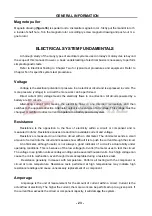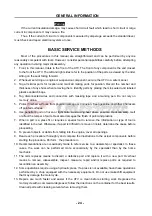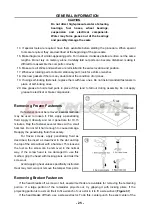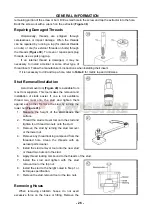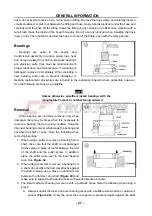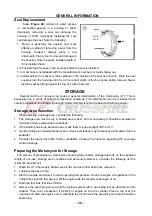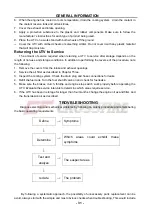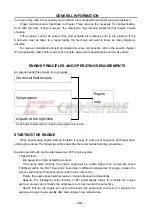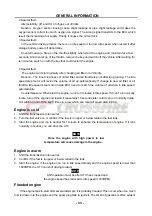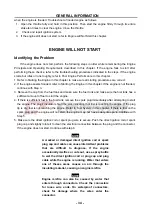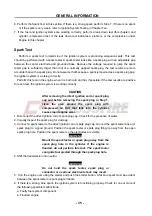
GENERAL INFORMATION
- 23 -
Magneto puller
Magneto drawing (figure 36) is special tool to dismantle magneto rotor . firstly put the mandril into th
e inside of shaft hole ,Turn the magneto rotor accordingly, screw magneto drawing and push-out ma
gneto rotor
ELECTRICAL SYSTEM FUNDAMENTALS
A thorough study of the many types of electrical systems used in today’s motorcycles is beyond
the scope of this manual. However, a basic understanding of electrical basics is necessary to perform
simple diagnostic tests.
Refer to Electrical Testing in Chapter Two for typical test procedures and equipment. Refer to
Chapter Ten for specific system test procedures.
Voltage
Voltage is the electrical potential or pressure in an electrical circuit and is expressed in volts. The
more pressure (voltage) in a circuit the more work can be performed.
Direct current (DC) voltage means the electricity flows in one direction. All circuits powered by a
battery are DC circuits.
Alternating current (AC) means the electricity flows in one direction momentarily and then
switches to the opposite direction. Alternator output is an example of AC voltage. This voltage must be
changed or rectified to direct current to operate in a battery powered system.
Resistance
Resistance is the opposition to the flow of electricity within a circuit or component and is
measured in ohms. Resistance causes a reduction in available current and voltage
Resistance is measured in an inactive circuit with an ohmmeter. The ohmmeter sends a small
amount of current into the circuit and measures how difficult it is to push the current through the circuit.
An ohmmeter, although useful, is not always a good indicator of a circuit’s actual ability under
operating conditions. This is because of the low voltage (6-9 volts) the meter uses to test the circuit.
The voltage in an ignition coil secondary winding can be several thousand volts. Such high voltage can
cause the coil to malfunction, even though it tests acceptable during a resistance test.
Resistance generally. Increases with temperature. Perform all testing with the component or
circuit at room temperature. Resistance tests performed at high temperatures may indicate high
resistance readings and cause unnecessary replacement of a component.
Amperage
Amperage is the unit of measurement for the amount of current within a circuit. Current is the
actual flow of electricity. The higher the current, the more work can be performed up to a given point. If
the current flow exceeds the circuit or component capacity, it will damage the system.

